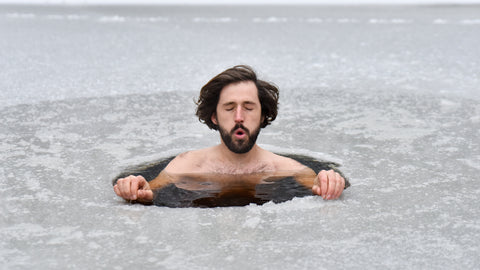Taking a cold plunge for the first time can be an eye-opening experience. One thing people often notice is just how challenging it can be to stay in control of their breathing.
Ironically, maintaining control over your breath is a leading benefit of taking a cold plunge. Let's shed light on why this is the case, along with some tips for how to breathe in a cold plunge tank.
What Are the Benefits of a Cold Plunge?
Cold plunges have become one of the most popular types of therapy with a wide range of health benefits. It can help improve circulation and relieve muscle soreness. Cold plunges can also help to boost your immune system and fight off infections.
For those who often have stressful days, cold plunging is also a proven method for calming down, alleviating stress, and elevating your mood. What's more, a single cold plunge can burn up to 200 calories, along with improving your skin's complexion and reducing wrinkles.
There's no doubt the health benefits are significant, so how can you enjoy them by keeping your breath under wraps?
How Long Do You Stay in the Cold Plunge?
For starters, being safe is a primary factor to be mindful of. Along with the temperature of the water, cold plunging requires vigilance regarding timing. It's important to never stay in a cold plunge too long, otherwise, you risk hypothermia.
This is why session times of 10 minutes or less are recommended, regardless of how much practice a person has. Beyond session time, though, control over breathing can ensure the best outcomes from cold plunging. Let's dive into this key aspect of ice baths next.
How to Breathe In Ice Bath? | Wim Hof Breathing
When you take a cold plunge, your breathing rate can increase all the way to 30 breaths per minute. That's about double the normal breathing rate for most people while they're sitting still.
However, one of the keys to gaining the greatest health benefits from an ice bath is to control your breathing.
As one of the world's most extreme athletes, Wim Hof, otherwise known as "The Iceman," invented the Wim Hof Method. He believes you can accomplish incredible feats by using specific breathing techniques and tolerance to extreme temperatures to develop command over your body, breath, and mind.
So what are some breathing techniques for remaining in control while submerged in ice baths?
1. Move To The Edge and Take a Few Deep Breaths
To kick off your cold plunge breath control, start by approaching the edge of the cold plunge and take some deep, slow, measured breaths. This will help align the body and mind to provide the sense of peace that comes from having total control over your breathing.
2. When Ready, Take a Deep Breath and Slowly Exhale
You'll want to enter the water on an exhale, which will provide room in the lungs to react to the initial shock of immersion in cold water. When plunging into frigid temperatures, the nervous system causes the lungs to automatically take a big breath in, so having empty lungs will provide plenty of space for an inrush of oxygen.
3. Keep Breathing Consistently and Slowly Enter
As you slide into the cold water, work to maintain slow, steady breathing. Your body will try to trick your brain into short, fast, shallow breaths, so it's important to focus your mind on slowing everything down.
Taking deep, slow breaths will help you get the right amount of oxygen into your blood, enhancing the benefits of your ice bath.
4. While in the Water, Focus on Even Breathing
Maintaining even, measured breaths for the entire session is the goal of taking an ice bath. When first starting out, this can be easier said than done, but practice makes perfect.
Rather than letting the mind shift to the discomfort of cold immersion, instead, direct your mental energy toward staying in control. With more experience, this practice can deliver a sense of peace and well-being, much the way meditation can.
5. If You Feel Anxious, Slow Your Breaths Down
At first, it can be a significant struggle to stay calm when getting into an ice bath. One of the most common bodily responses is feeling panicked or anxious, which produces rapid breathing rates.
If you feel yourself drifting into this mental territory, redirect your attention to your breathing. The simple act of taking slow breaths is immensely helpful for remaining calm in any situation, especially when it comes to cold exposure.
Practice Breathwork at Home With Cold Plunge From RENU Therapy
To develop a stronger ability to control your breathing, it's essential to maintain a consistent cold plunge practice. Just like any physical endeavor, there's a mental element to cold plunging that demands practice over time.
With RENU Therapy, you'll be able to practice your breathing while cold plunging anytime at home. Check out our lineup of cold plunge tubs today and see why RENU has a reputation for delivering exceptional quality and experience. Find your cold plunge tub in our wide selection today!















